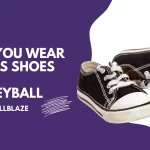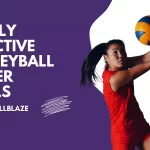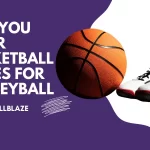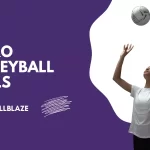The answer to this question comes from my extensive volleyball experience, including playing with and without ankle braces, for more than 15 years.
There is no clear answer to this question, and it’s a very valid one.
In other words, while some people may answer yes, others may answer no.
Anyhow, ankle braces aren’t the most effective way to prevent ankle injuries in volleyball, as I’ll explain further in the following section.
My goal is to discuss what the research says about this topic and what I think is the correct answer based on my own opinion and that of other elite volleyball players.
Let’s get started!
What Is an Ankle Brace?

Let’s agree on what constitutes an ankle brace before we proceed. Wearing an ankle brace helps protect and immobilize the ankle from sprains and other injuries. From recovery and everyday use to sports and other physical activities, ankle braces can be used in a variety of situations.
The ankle braces volleyball players wear during play do not immobilize, but protect and limit the ankle’s range of motion. A combination of plastic, metal, and fabric is often used in the construction of these braces.
Specially designed to provide the maximum support and protection, they are specifically constructed.
Injury history for ankles
Wearing ankle braces is more beneficial to athletes with a history of grade two or three ankle sprains than to those without.
For individuals who participate in activities having the highest risk of ankle sprain injuries, semirigid ankle braces may be beneficial for reducing the incidence of recurrent ankle sprain injuries.
The benefits of wearing ankle braces during your volleyball career will probably be quite minimal if you haven’t sustained ankle injuries.
This scar tissue buildup, however, does weaken your ankles over time and makes them more susceptible to sprains for those of us who have performed countless ankles over the years.
When you’re in this group (which is almost everyone), ankle braces definitely make sense.
Why Do Scientists Believe What They Do?
In terms of the literature on this subject, it’s a complete mess.
Wearing ankle braces makes you jump lower according to some studies, but not according to others.
Studies have shown that ankle braces slow runners down, as well as those that show they don’t.
There is, however, evidence that ankle braces are effective in treating previously injured ankles.
What does all of this mean?
The elephant in the room needs to be addressed before we get to my recommendations.
Why Wear an Ankle Brace?

Please consult your physician or a professional athletic trainer before making any decisions regarding your safety. Keeping in mind that no two situations are alike when it comes to your health is important.
With this article, I hope to provide you with the information necessary to make an educated decision regarding the safety of volleyball players.
Preventing an Injury
An ankle brace is a simple preventive measure that some athletes and trainers recommend in volleyball due to the frequency of ankle injuries. As a result of volleyball’s natural jumping requirements, players often have to land in difficult and awkward positions.
The risk of injury makes ankle braces a preventive measure of choice for many players.
Prophylactic braces are generally believed to reduce the number of incidents on the research side of things since they are worn for preventive purposes. High school basketball players with and without a history of ankle injuries were found to benefit from lace-up ankle braces in a prospective study.
An injury risk may be reduced by wearing a lace-up brace, according to this study. Similarly, the same study points out that wearing a brace would not reduce the severity of an injury if one still occurred.
As a preventive measure, all volleyball players at the authors’ university were required to wear ankle braces from 1998 to 2005, according to another study from 2008.
Data from that institution was then compared to injury reports from all colleges in that year submitted to the National Collegiate Athletic Association. Based on the collected data, wearing a brace significantly reduced ankle injuries when compared to not wearing one.
In conclusion, the study found that wearing an ankle brace was useful in preventing ankle injuries in these active athletes who are vulnerable to injury.
You’re not done yet! Lastly, I would like to point out a 2018 meta-analysis that included six randomized control trials with athletes comparing ankle bracing to no intervention.
According to their conclusion, ankle bracing can prevent acute ankle injuries in athletes in both primary and secondary ways.
Doesn’t Wearing Ankle Braces Weaken Your Ankles?
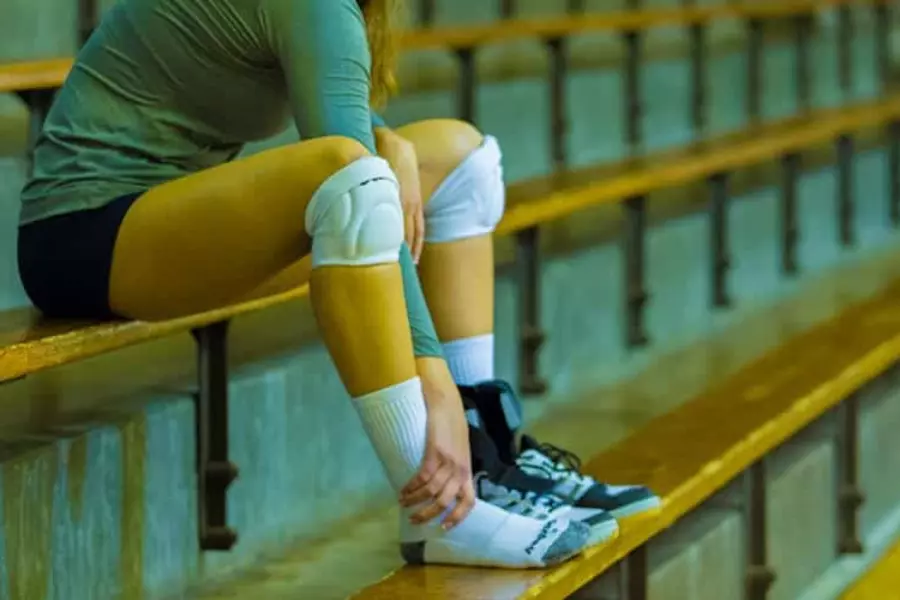
One of the main reasons people seem to think ankle braces are bad is because of this.
Research shows that prolonged use of ankle braces does not cause weakness, which some people claim to be a myth.
But those people are also wrong.
Even if there is no research, that doesn’t mean it doesn’t exist.
When people use crutches or wear casts for a long time, their muscles atrophy and their ligaments weaken.
An ankle brace resembles a cast in concept, but it also restricts movement for a long period of time.
If you only wear ankle braces while playing volleyball, the muscles and connective tissue surrounding your ankles will probably weaken over time.
Since I have been wearing ankle braces for volleyball for years, this is just my personal hunch.
You may enjoy reading How To Wear Volleyball Knee Pads?
Is it recommended to wear ankle braces?
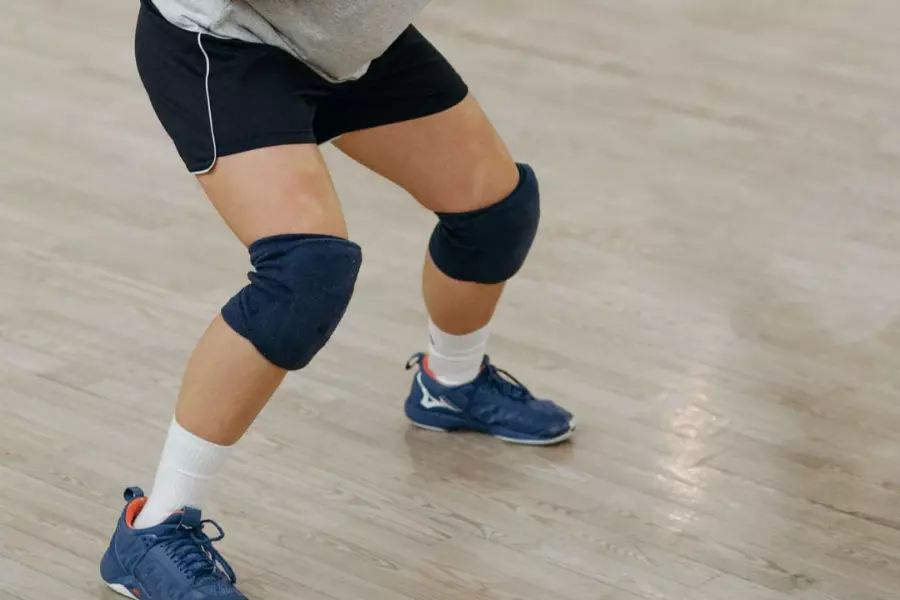
Without ankle guards, we were literally not allowed to practice in Volleyball Australia’s Elite Development Program.
As someone who plays volleyball 25+ hours a week, ankle braces are a necessity for me.
My experience with this exact issue goes back years, and I’m not a medical professional.
When I was younger and had no history of ankle sprains, I would avoid ankle braces altogether during my volleyball career.
For bulletproof ankles, I would perform a regular ankle mobility routine to strengthen my ankle flexors and extensors.
I would wear ankle braces to volleyball training and matches if and when ankle injuries started appearing.
It’s the middle part that matters most.
Developing strong feet and ankles isn’t given enough attention in volleyball programs, but it’s crucial for volleyball players who jump a lot.
The Ankle Braces Aren’t Perfect!
The fact that you can sprain your ankle while wearing ankle braces should be noted!
As I was wearing my ankle braces on tour in Thailand, I sustained a really nasty grade 3 ankle sprain that ended my tournament.
You are more likely to avoid injuries when you wear them, but they aren’t perfect.
Here are some other things you should keep in mind.
Lace-up ankle braces are not recommended
A lace-up ankle brace has been proven to reduce muscle torque and power output during athletic movements, so avoid them if you need some ankle braces.
Consider semi-rigid braces instead, which have proven not to impair sports performance and are less restrictive.
I’ll discuss ankle braces shortly.
Do I recommend any ankle braces?
Since the beginning of my career, I have exclusively used T2 Active Ankle braces and have found that they do a decent job overall.
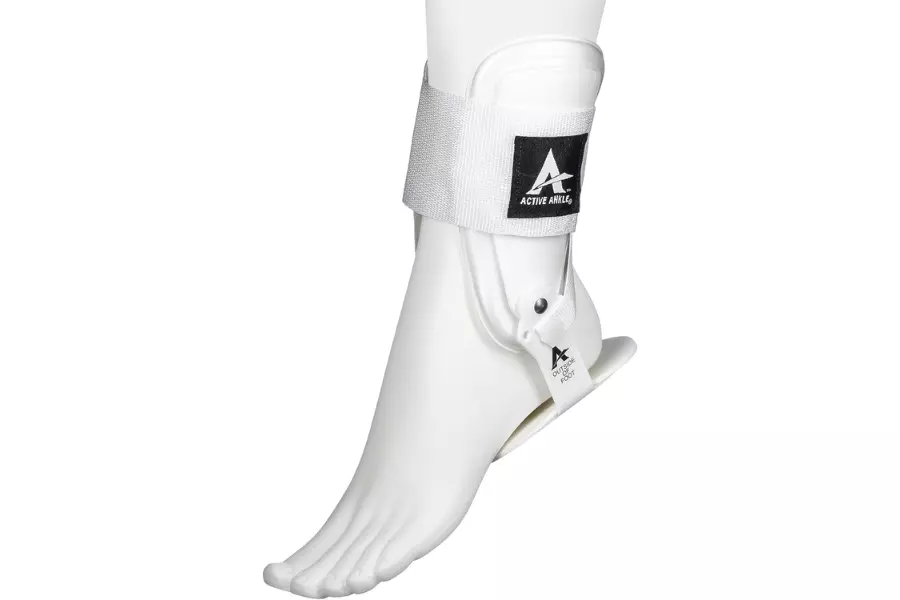
It was the most popular ankle brace I saw volleyball players wear, and I rarely saw anyone else wearing it!
The shoes fit quite nicely into your volleyball shoes, provide a good amount of support, and don’t seem to adversely affect your performance.
You can find my full breakdown of which ankle braces to wear based on which position you are in in the article below.
More, you can read our guide here Best Ankle Braces For Volleyball
Benefits and Drawbacks of Wearing Ankle Braces

Pros of Ankle Braces
Prevention of Injuries
The primary benefit of ankle braces is that they prevent injuries. Players can remain on the court for longer periods of time and avoid painful setbacks if they wear them since they reduce the risk of sprains and strains.
Enhanced Stability
Especially during lateral movements and jumps, ankle braces provide enhanced stability. As a result, they reduce the risk of rolling or twisting of the ankle joint.
Confidence Booster
A player’s confidence can be boosted by wearing ankle braces. Having extra ankle protection allows them to play more aggressively without being concerned about getting injured.
Cons of Ankle Braces
Restricted Mobility
It is possible to limit mobility with ankle braces, even though they provide stability. On the court, players may feel somewhat restricted in their movements, which can affect their agility.
Dependency
It is possible to become dependent on ankle braces. Using them heavily may lead to players neglecting proper strengthening exercises and techniques.
Cost Considerations
It can be expensive to purchase quality ankle braces. Budget players may find this to be a significant drawback.
You may enjoy reading Best Volleyball Knee Pads
How To Prevent Volleyball Ankle Injuries

Doing these activities regularly will be 2-3 times more effective than wearing ankle braces, I almost guarantee it.
My volleyball career would have been better had someone told me about this when I was competitive!
1. Strengthen your Tibialis Anterior
On your shin, you have a muscle called the tibialis anterior.
Upon landing after spiking a volleyball, it’s your legs’ first line of defense against contact forces caused by ankle dorsiflexion.
Anyone who jumps frequently will benefit immensely from training this often-overlooked muscle.
A tib bar (as shown above) should be used about 2-3 times a week by volleyball players, after which they will begin to notice a significant improvement in their overall stability, particularly with landings.
2. Enhance ankle mobility
Shoes with raised heels all day result in poor ankle mobility for most people.
Athletic performance depends on having flexible, limber ankles. However, ankle sprains can also be prevented through ankle flexibility and limberness.
Poor ankle mobility can be caused by past injury, so if you’ve done a few ankles in the past, you’ll need to work more on it!
A good way to improve ankle mobility is to do a lot of calf stretching.
Stretching your calves is easy by standing on a slant board and holding the stretch for a couple of minutes.
You can improve ankle mobility just by stretching your calves thoroughly every day for five minutes.
3. Walk in an ankle inversion
Taking ankle walks is another great way to strengthen your ankle’s tibialis anterior muscles.
In volleyball, ankle inversion sprains are the most common injury type, so I strongly recommend becoming strong in this position.
It may seem difficult at first but try to simply stand on the sides of your feet without moving your feet.
The walk should eventually become quite comfortable for you.
4. Perform split squats with ATG
ATG split squats are another exercise you should include in your ankle mobility program.
In addition to stretching your Achilles tendon, this exercise is very effective at developing ankle mobility.
Exercises like these have countless other benefits, mostly for the knee, but they’re also great for ankle bulletproofing.
5. Regularly use a training sled
Training our feet is something we tend to neglect as athletes.
Train with a sled to develop the muscles in your feet, as there is a big amount of muscle there.
Your toes and feet get a workout like no other when you push a training sled.
A super effective workout is also being given to your Achilles.
The tibialis, Achilles, and toes of your feet must be strong for your ankles to be bulletproof.
The more of these exercises you include in your weekly routine, the less likely you are to need ankle braces on the volleyball court!
You may enjoy reading Best Volleyball Shoes For Ankle Support
Should Liberos Wear Ankle Braces?
You shouldn’t wear ankle braces if you are a libero, in my opinion!
Jumping to spike or block the ball poses almost all of the danger to your ankles.
Around the net, I have almost always sprained my ankles after landing awkwardly on someone else’s foot.
When you have such a low injury risk as a libero, it would be insane for you to risk weakening your ankles.
Should Setters Wear Ankle Braces?
It’s a little more nuanced this time.
Are you usually played in the back row as a setter? Does your front row tend to attack and block quite a bit?
My ankle braces would only be worn if my team preferred the 5-1 rotation, as I would be forced to block (i.e. jump) more often.
Since my team only uses two back-row setters, I wouldn’t wear ankle braces completely as it’s not worth potentially weakening my ankles to avoid injury.
You may enjoy reading Best Volleyball Training Equipment For Hom
Why Professionals Don’t Wear Ankle Braces?

Professional volleyball players, whose livelihoods depend on not getting injured, seem to be the first athletes to wear ankle braces, don’t you think?
Players wearing ankle braces are nowhere to be seen at the European Championships.
In men’s professional volleyball, ankle braces are more common, but I’d estimate maybe half are actually wearing them.
There probably isn’t a lot of difference in the end…
An ankle brace is just not that important whether you wear one or not.
Frequently Asked Questions
Are ankle braces a must for all volleyball players?
No, ankle braces are not required for all volleyball players. Injuries to the ankle are more likely to occur to those with a history of them or at a higher risk.
Can ankle braces cause discomfort during play?
It may be uncomfortable or restrictive for some players to wear ankle braces, despite their ability to provide stability. Choosing the right brace for your needs and ensuring a proper fit are essential.
What are some alternatives to ankle braces for injury prevention?
The use of tape, proprioceptive training, and exercises that strengthen the ankles are all alternatives to ankle braces.
How do professional volleyball players protect their ankles?
A variety of injury prevention options, including ankle braces, can be developed by volleyball professionals in collaboration with sports medicine professionals.
Where can I find reputable ankle brace brands?
In addition to sporting goods stores and online retailers, healthcare professionals can also recommend reliable ankle brace brands.
Conclusion
Ultimately, wearing ankle braces in volleyball is a matter of personal preference.
There are many world-class volleyball players who do not wear ankle braces.
There are a lot of them who do.
It is logically inferred that wearing ankle braces on the volleyball court over an extended period will weaken your ankles over time, even though there is no evidence to support this claim.
Ankle braces are definitely recommended for athletes with a history of ankle injuries in order to prevent recurrences.
The exercises discussed above should be performed every week by athletes regardless of whether they wear ankle braces or not.
You may enjoy reading Best Volleyball Rebounders

